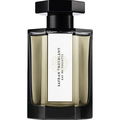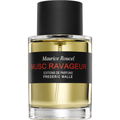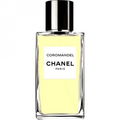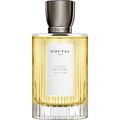08/01/2025

ClaireV
958 Reviews

ClaireV
1
Creamy, complex saffron delight
A creamy, dessert-saffron takes center stage here. But a significant clove, ginger, orange, and cinnamon combination lends it a spicy pomander feel that makes my mind wander more in the direction of Pan d'Epices and other European Christmas treats, rather than in the direction of delicate, dusty-floral Indian milk puddings. There is rose too, and whole ladlefuls of a dark, molten honey - not sweet, but rather bitter and grown-up, like the slight edge of bitterness on a candied peel or a raisin that rescues a taste from being too sugary. There is a charming medieval feel, overall, like a rich golden tapestry hanging on a banquet hall or the taste and smell of those sticky (but dry) honey and almond cakes studded with nuts, cloves, and dried orange peel that are still popular in Siena and Pisa today, such as panforte and ricciarelli.
Cimabue is no simple gourmand, though. It's a fully-fledged oriental. It's as if the simple, gourmandy custard of Safran Troublant got dipped into the clove-studded orange and booze of Chanel's Coco, rubbed in the spicy velvet of Opium, and rolled around in the ambery dust of Fendi's Theorema, and emerged twelve hours later all the better and wiser for it. It's the pomander-cross-spice gourmand I had hoped Noir Epices by Frederic Malle would be (but wasn't).
I own two bottles of Safran Troublant, because I love it mindlessly and wear it as a simple comfort scent. But Cimabue is a step forward in the perfume evolutionary chain, and as a piece of art, I prefer it. However, since the age of customs and tariffs, I can no longer buy my annual travel sized bottle of Cimabue directly from Dawn, so Safran Troublant will have to do for now.
Cimabue, by the way, was the Italian artist famous for breaking with the flat Italo-Byzantine style of painting icons and frescos in pre-Renaissance Italy by introducing more naturalistic, true-to-life proportions of figures and shading. And I like to think that the name of this fragrance was deliberate. Because Cimabue takes the basic model of Safran Troublant, animates it subtly with shadows and highlights, and renders it in living, breathing, 3-dimensional form. It doesn't make me love Safran Troublant any less, but it is only when I wear its more evolved descendant that I become aware of the progenitor's serene flatness.
Cimabue is no simple gourmand, though. It's a fully-fledged oriental. It's as if the simple, gourmandy custard of Safran Troublant got dipped into the clove-studded orange and booze of Chanel's Coco, rubbed in the spicy velvet of Opium, and rolled around in the ambery dust of Fendi's Theorema, and emerged twelve hours later all the better and wiser for it. It's the pomander-cross-spice gourmand I had hoped Noir Epices by Frederic Malle would be (but wasn't).
I own two bottles of Safran Troublant, because I love it mindlessly and wear it as a simple comfort scent. But Cimabue is a step forward in the perfume evolutionary chain, and as a piece of art, I prefer it. However, since the age of customs and tariffs, I can no longer buy my annual travel sized bottle of Cimabue directly from Dawn, so Safran Troublant will have to do for now.
Cimabue, by the way, was the Italian artist famous for breaking with the flat Italo-Byzantine style of painting icons and frescos in pre-Renaissance Italy by introducing more naturalistic, true-to-life proportions of figures and shading. And I like to think that the name of this fragrance was deliberate. Because Cimabue takes the basic model of Safran Troublant, animates it subtly with shadows and highlights, and renders it in living, breathing, 3-dimensional form. It doesn't make me love Safran Troublant any less, but it is only when I wear its more evolved descendant that I become aware of the progenitor's serene flatness.




 Top Notes
Top Notes  Nutmeg
Nutmeg Cardamom
Cardamom Bergamot
Bergamot Bitter orange
Bitter orange Clementine
Clementine Italian neroli
Italian neroli Lemon
Lemon Heart Notes
Heart Notes  Cinnamon
Cinnamon Clove
Clove French beeswax
French beeswax Jasminum grandiflorum
Jasminum grandiflorum Moroccan rose absolute
Moroccan rose absolute Egyptian geranium
Egyptian geranium Mysore sandalwood
Mysore sandalwood Tuberose absolute
Tuberose absolute Carnation absolute
Carnation absolute Saffron absolute
Saffron absolute Base Notes
Base Notes  Siam benzoin
Siam benzoin Tahitian vanilla
Tahitian vanilla Cistus absolute
Cistus absolute Labdanum
Labdanum Opoponax
Opoponax
































